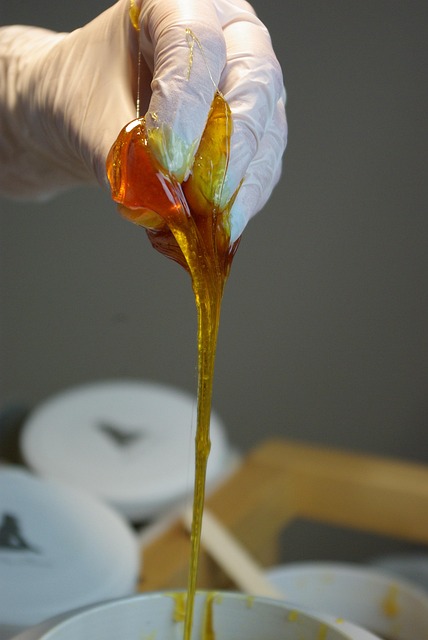Cryotherapy is a popular non-invasive method for skin tag removal using liquid nitrogen to freeze and destroy tags. It offers minimal downtime and side effects, but individuals with medical conditions like diabetes or poor circulation should exercise caution. Consulting a qualified professional at a specialized clinic is crucial for determining suitability and understanding the procedure's effects.
“Considering cryotherapy for skin tag removal? This innovative method has gained popularity for its alleged painlessness, but is it truly free from discomfort? Our article delves into the world of cryotherapy for skin tags, explaining how this non-invasive procedure works and what to expect during treatment. We explore its numerous benefits while also shedding light on potential risks. By understanding this unique removal method, you’ll be better equipped to make an informed decision.”
- Understanding Cryotherapy for Skin Tags
- How Does Cryotherapy Work on Skin Tags?
- Pain Levels: What to Expect During Treatment
- Benefits and Potential Risks of This Method
Understanding Cryotherapy for Skin Tags

Cryotherapy has emerged as a popular and effective method for skin tag removal. This non-invasive procedure involves freezing skin tags with liquid nitrogen, causing them to shrivel and fall off over time. It’s important to understand that cryotherapy is typically performed in a clinical setting by trained professionals. The process starts with cleaning the area around the skin tag to ensure proper hygiene. Then, a small needle or probe is used to apply liquid nitrogen directly to the tag, which can result in a brief stinging sensation due to the cold temperature.
For those seeking private skin tag removal in Manchester or Salford, or considering a London skin tag clinic, understanding cryotherapy offers a promising solution. While some individuals may experience mild discomfort during the procedure, it’s generally well-tolerated, and the recovery process is relatively straightforward. After treatment, patients might notice redness, swelling, or itching, but these symptoms are usually temporary and subside within a few days. It’s crucial to consult with a healthcare professional who can assess each skin tag individually and determine if cryotherapy is the best course of action for safe and effective removal.
How Does Cryotherapy Work on Skin Tags?

Cryotherapy is a non-invasive skin tag removal method that uses extreme cold to freeze and destroy unwanted skin tags. During the procedure, liquid nitrogen is applied to the targeted skin tags, causing them to become numb rapidly. The intense cold then freezes the blood vessels supplying the skin tag, effectively cutting off its oxygen and nutrient supply. Within minutes, the skin tag becomes necrotic, leading to its eventual shedding from the skin.
This innovative approach offers a quick and relatively painless alternative to traditional removal methods like surgery or lancing. Unlike surgical excision, cryotherapy doesn’t leave scars or require extensive downtime. It’s also suitable for individuals seeking a discreet and private solution, as it can be performed in specialized clinics, such as the maidstone skin tag clinic or private skin tag removal services available in preston. This method is particularly beneficial for those with multiple skin tags who prefer a more gentle approach to removal.
Pain Levels: What to Expect During Treatment

Cryotherapy is often considered a painless method for removing skin tags, but it’s important to understand what to expect during treatment. The procedure involves quickly freezing the targeted skin tags with liquid nitrogen, which can cause a temporary stinging sensation. This feeling is usually described as mild to moderate discomfort, similar to a quick snap or pinch. However, modern cryotherapy techniques have significantly reduced the pain associated with the process.
At a reputable clinic like Blackburn Skin Tag Clinic or Newark-on-Trent Skin Tag Clinic, healthcare professionals will take steps to minimize any inconvenience. They may use topical anesthetics or cooling gels before the treatment to numb the skin, ensuring patients experience minimal discomfort. After the cryo treatment for skin tags (patient guide), it’s common to feel a burning or itching sensation as the area thaws, but this usually subsides within a few hours. It’s crucial to follow post-treatment care instructions provided by your specialist to optimize healing and minimize any potential side effects.
Benefits and Potential Risks of This Method

Cryotherapy, as a skin tag removal method, offers several benefits that have made it a popular choice among many. This non-invasive procedure uses liquid nitrogen to freeze and destroy unwanted skin tags, leading to their gradual disappearance over time. One of its key advantages is the minimal downtime and recovery period compared to more aggressive surgical methods. Patients can typically resume their normal activities shortly after the treatment, with only mild redness or itching as common side effects.
However, like any procedure, cryotherapy for skin tag removal also comes with potential risks. In rare cases, excessive freezing can lead to skin damage or blisters. Individuals with certain medical conditions, such as diabetes or poor circulation, should exercise caution, as they may be more susceptible to complications. It’s essential to consult a qualified professional, like those at a Salford skin tag clinic, to discuss the procedure’s suitability for your specific case and understand the before-and-after effects to make an informed decision.
Cryotherapy presents a non-invasive and effective skin tag removal method, offering several benefits such as minimal scarring and quick recovery. While some discomfort is expected during treatment, pain levels are generally manageable and often described as bearable. It’s important to remember that every individual’s experience varies, so consulting a qualified professional for personalized advice is essential. By understanding the process and potential risks, you can make an informed decision about whether cryotherapy is the right choice for your skin tag concerns.
